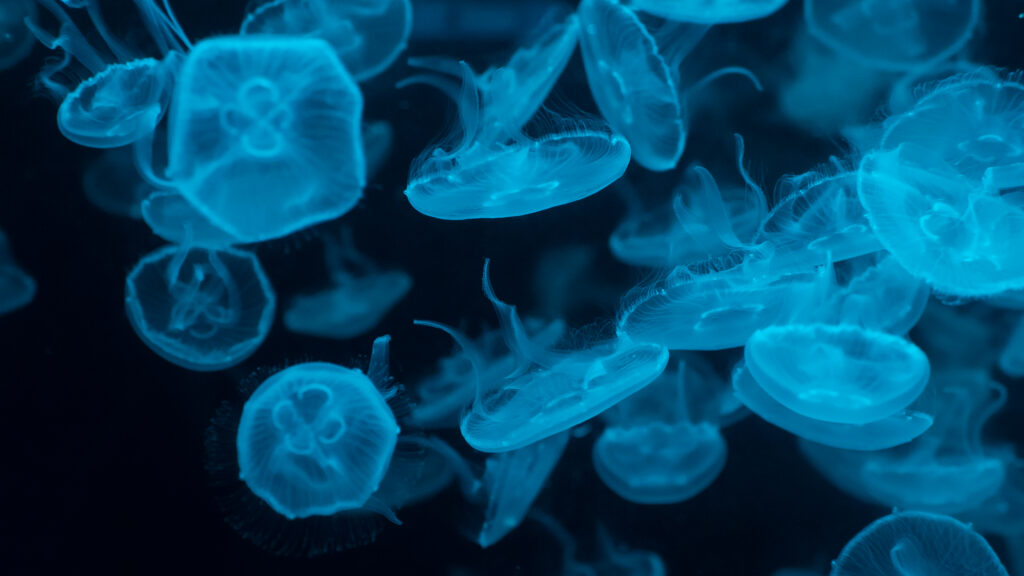In the early stages of their life cycle, many marine invertebrates (animals without backbones) are often free-swimming larvae covered with tiny hair-like structures (cilia).

These larvae possess a grouping of sensory cells, known as an apical organ, and some also have a long tuft of cilia, called an apical tuft.
Like an antenna, the apical tuft is thought to receive environmental cues which can help regulate larval swimming behaviour and aid the larvae metamorphose from drifters on the currents to a life in the bottom of the sea.
Among marine animals that lack symmetry in their bodies (non-bilaterians), an apical organ with integrated neurons is only found in soft-bodied, stinging animals such as corals, sea anemones and jellyfish (cnidarians).
Studies between the starlet sea anemone Nematostella vectensis and bilaterian ciliated larvae have revealed shared genes at the apical domain, suggesting they have remarkably similar apical organs that may have evolved from a single ancestor.
However, the absence of apical organ structures in some marine invertebrates has raised questions about its evolutionary origin. For example, sea anemones have apical organs with ciliary tufts, whereas stony corals and true jellyfish lack an apical tuft.
Researchers from the Marine Biological Association (MBA) led a study to investigate the origin of the apical organ to find out why some marine invertebrates have this unique apical tuft and others do not.
The team analysed the DNA sequences of four species belonging to three major groups of cnidarians: moon jellyfish, sea anemones and stony corals Acropora millepora and Acropora tenuis.
The study revealed that genes crucial for apical organ development in sea anemones are not found in moon jellyfish, indicating that the apical organ of jellyfish have may have undergone a long period of evolution that has resulted in a very different apical organ to that of sea anemones and corals.
However, scientists also found that stony coral larvae share apical genes with Nematostella sea anemones, but lack cilia-associated genes, which are essential for developing an apical tuft.
Results indicate that sea anemones pioneered unique genes in the apical domain after splitting from the rest of the cnidarians, resulting in the evolution of ciliated apical tuft.
Researchers suggest that the common ancestor of cnidarians and bilaterians lacked an apical organ with a ciliary tuft, and it could have evolved independently in several groups.
PhD Student Eleanor Gilbert led the study as part of the MBA’s research group which examines the evolution of non-bilaterian marine animals.
She said: “The findings shed new light on the fundamental mechanism of larval evolution that is crucial for understanding larval development and animal evolution.”
Find out more and read the full paper: https://academic.oup.com/mbe/article/41/1/msad285/7502916